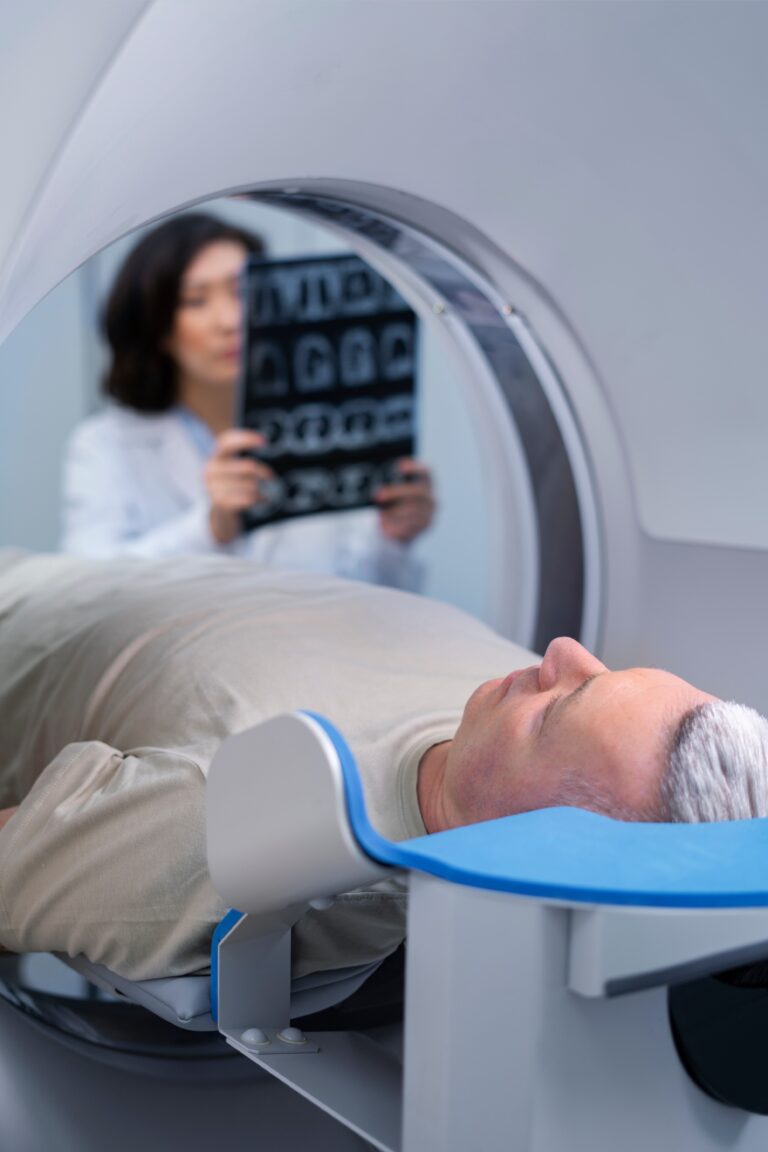
radiation therapy for cancer patients
Cancer is a formidable disease that affects millions of people worldwide. Fortunately, medical advancements have led to various effective treatments, including radiation therapy, a key component in the fight against cancer. This treatment uses high-energy radiation to destroy cancer cells, shrink tumours, and prevent their spread.
How Does Radiation Therapy Work?
Radiation therapy stops cancer cells from proliferating and dividing by destroying the DNA within them. Radiation therapy is frequently targeted, meaning it only targets the precise location where the tumour is located, in contrast to chemotherapy, which affects the entire body. This accuracy reduces harm to the surrounding healthy tissues.
Radiation therapy comes in two primary forms:
- External Beam Radiation Therapy (EBRT): The most common type, where a machine directs radiation beams at the tumour from outside the body.
- Internal Radiation Therapy (Brachytherapy): A large dose of radioactive material is delivered straight to the tumour by placing it within the body close to the cancer cells.
When Is Radiation Therapy Used?
Radiation therapy can be utilised in several ways depending on the cancer type and stage:
- Curative Treatment: To remove cancer totally; frequently used for early-stage malignancies.
- Adjuvant Therapy: Given after surgery to kill leftover cancer cells.
- Palliative Care: To alleviate advanced cancer symptoms, such as pain or bleeding.
It is frequently used to treat malignancies of the brain, head and neck, lung, breast, and prostate, among other organs.
What to Expect During Treatment
Patients go through a simulation session where doctors use imaging scans to precisely map out the treatment region before beginning radiation therapy. Like an X-ray, the treatment itself is painless and typically lasts only a few minutes per session. Daily sessions spanning a few weeks may be necessary for a full course.
Side Effects of Radiation Therapy
Despite its great effectiveness, radiation can have adverse effects that differ according to the location being treated:
- Fatigue: A common side effect due to the body’s healing process.
- Skin Changes: Redness, dryness, or irritation at the treatment site.
- Localised Effects: For example, throat irritation in head/neck radiation or digestive issues in abdominal treatment.
Most side effects are temporary and can be managed with medications and lifestyle adjustments.
Advances in Radiation Therapy
Modern technology has made radiation therapy more precise and safer than ever. These advances increase outcomes while lowering adverse effects.
- Intensity-Modulated Radiation Therapy (IMRT) – Adjusts radiation beams to match the tumour’s shape.
- Stereotactic Radiosurgery (SRS) – Delivers high doses in fewer sessions, often used for brain tumours.
- Proton Therapy – Uses protons instead of X-rays to reduce damage to healthy tissues.
Radiation therapy remains a cornerstone of cancer treatment, offering hope and healing to countless patients. With ongoing advancements, it continues to become more effective and personalised. If you or a loved one is considering radiation therapy, consult with an oncologist to understand the best approach for your specific condition. Cancer is a tough battle, but with treatments like radiation therapy, victory is within reach.












